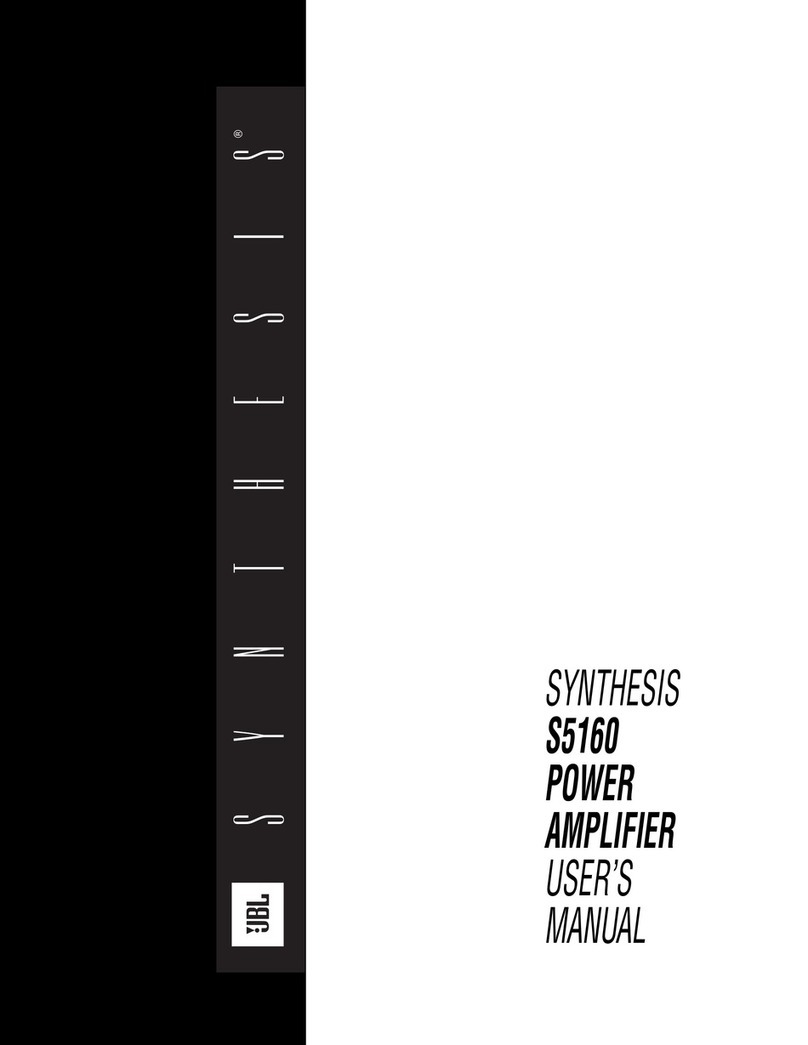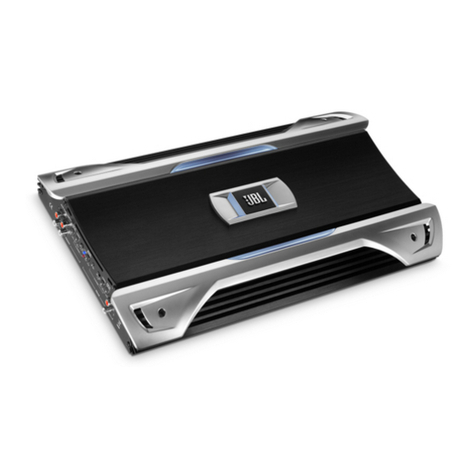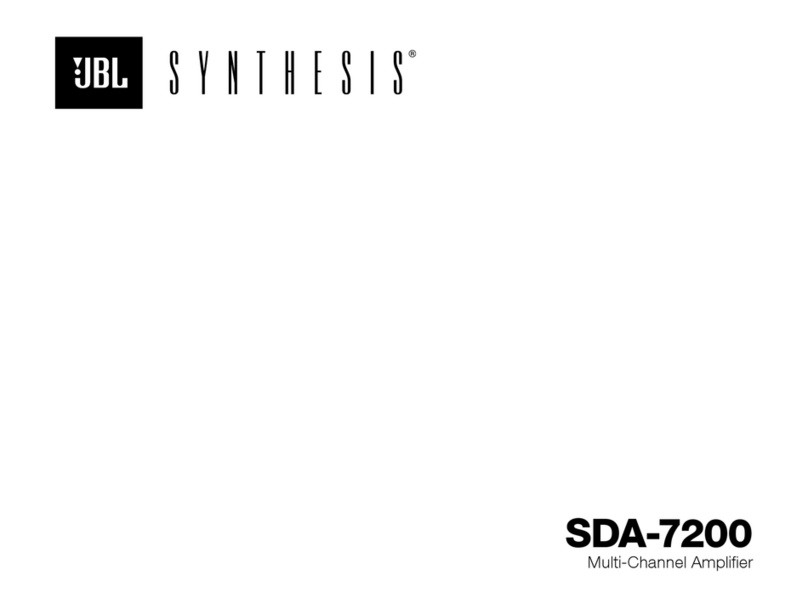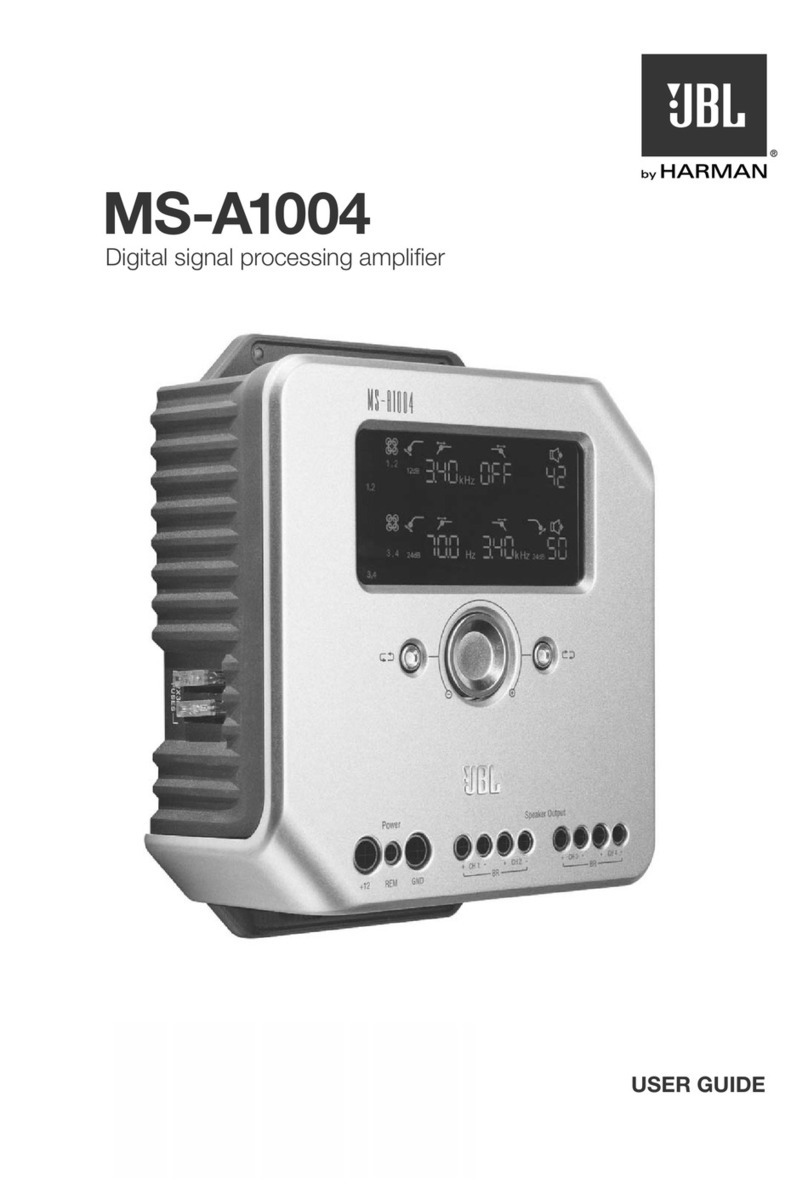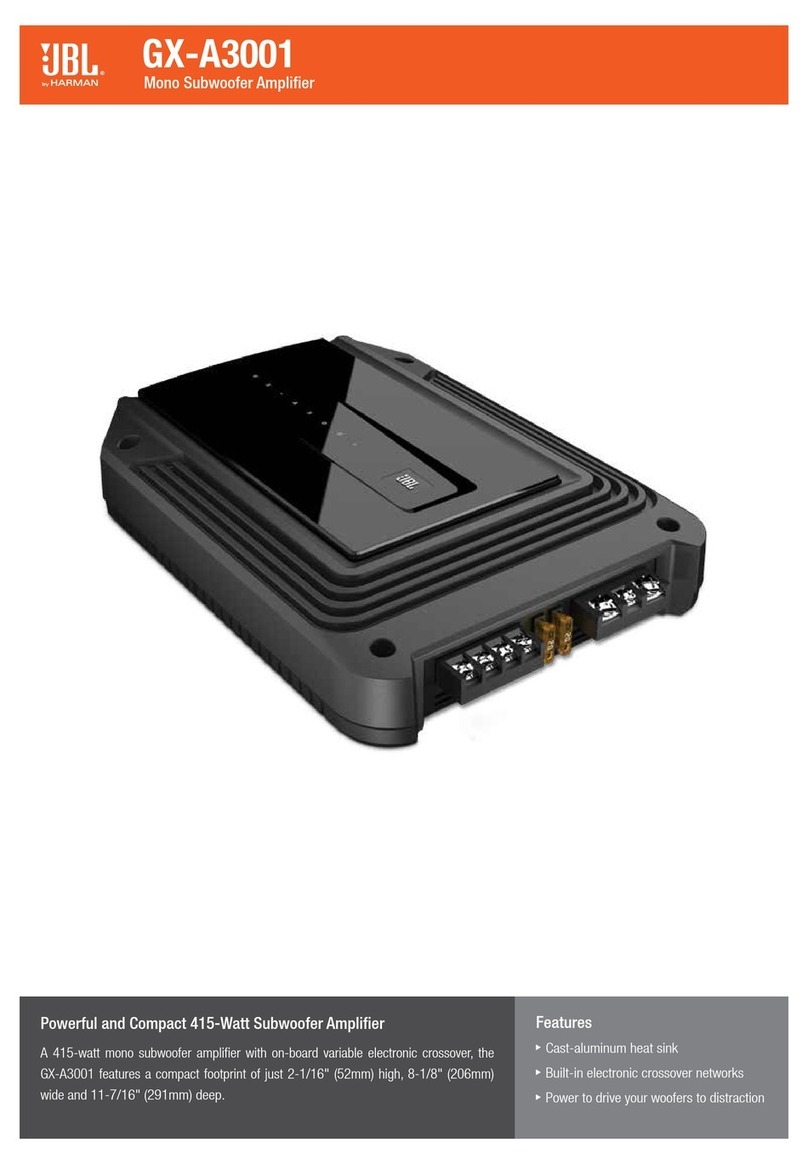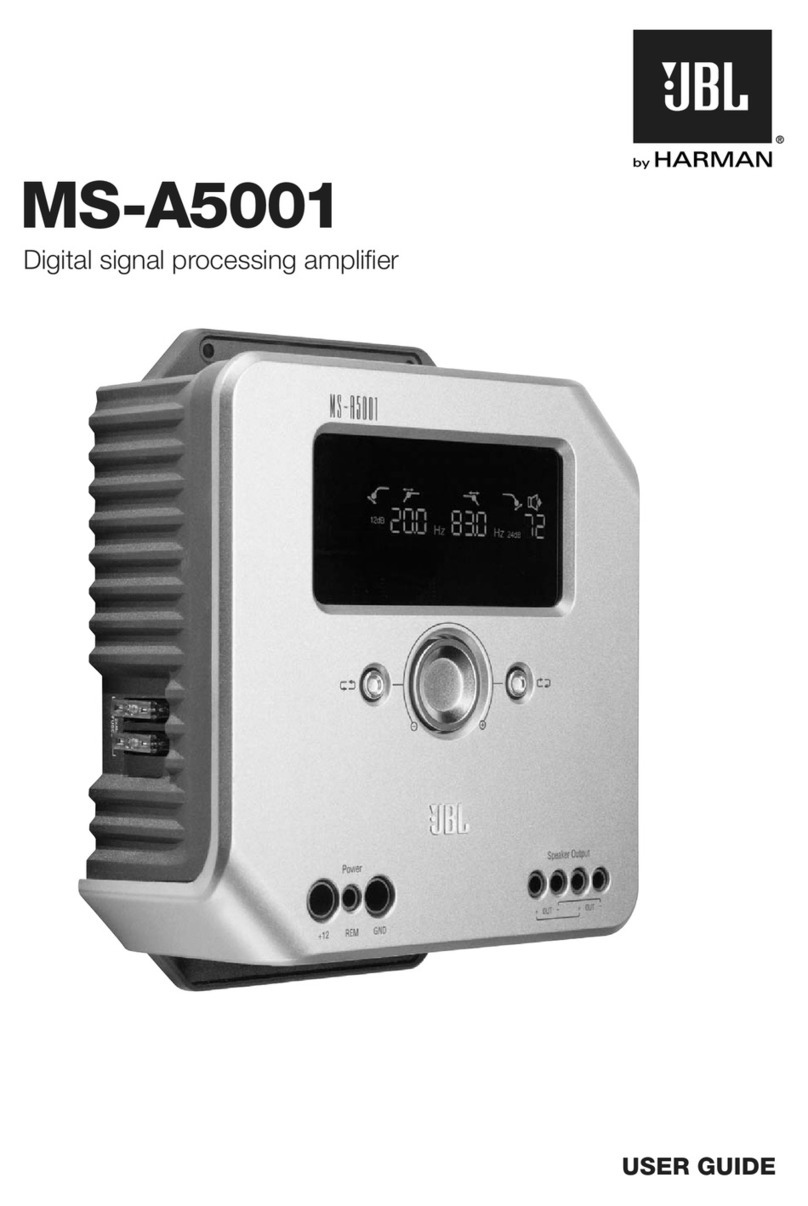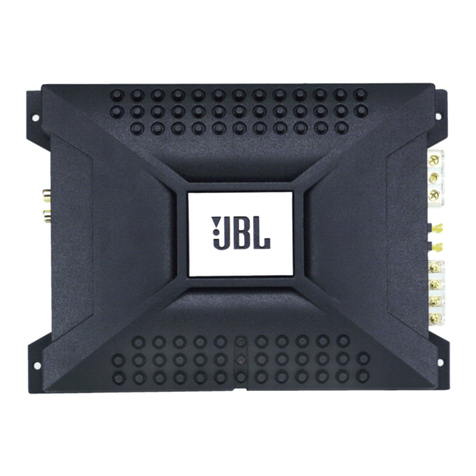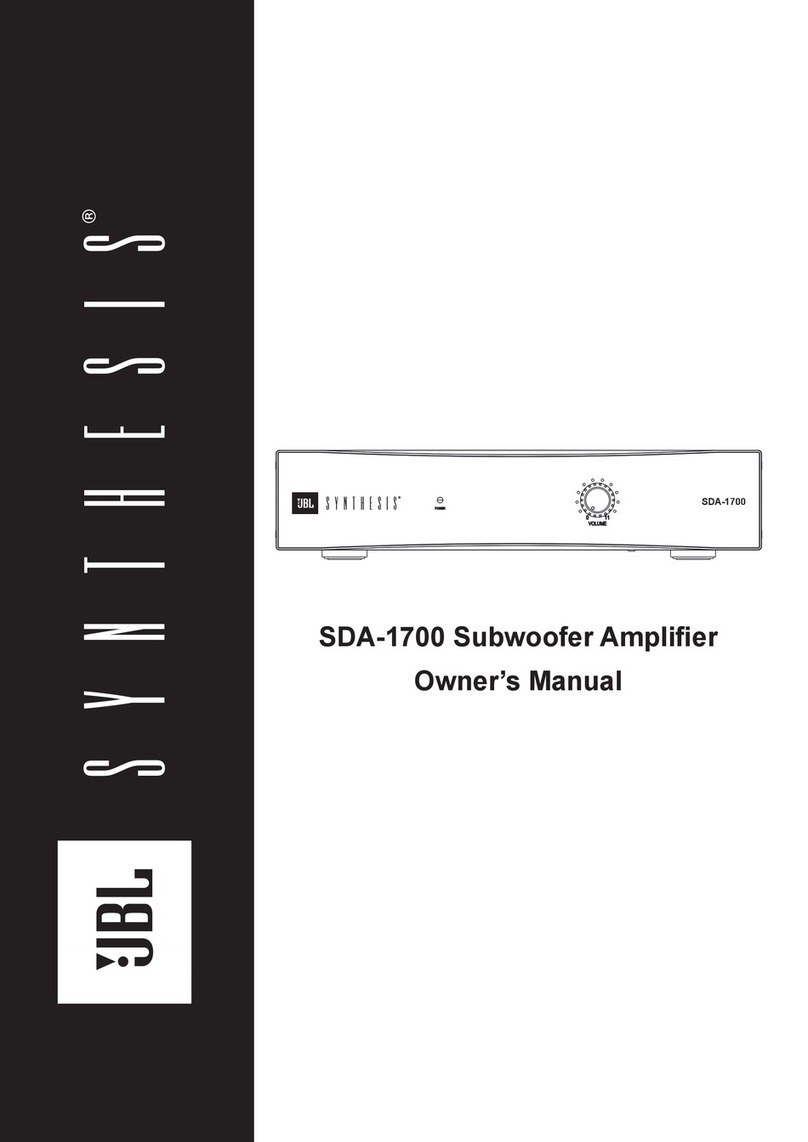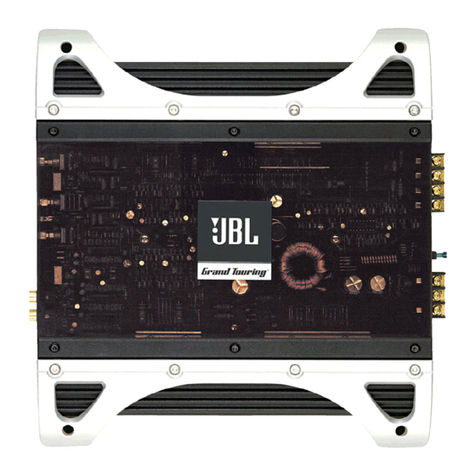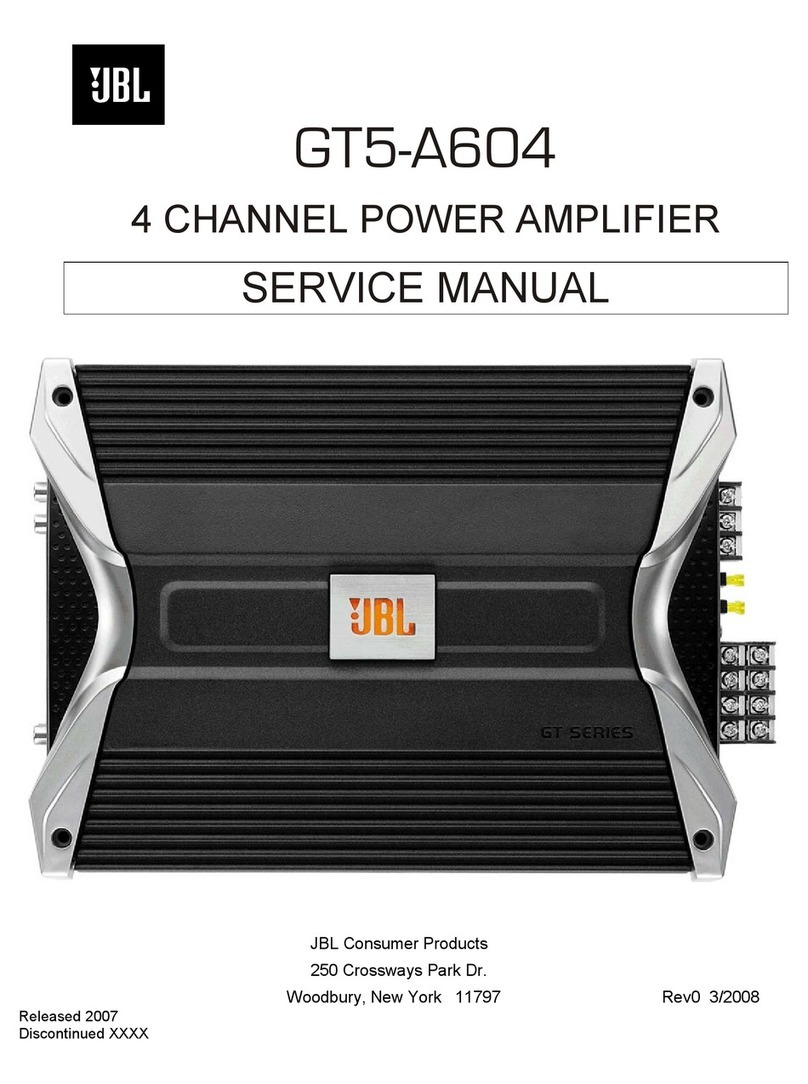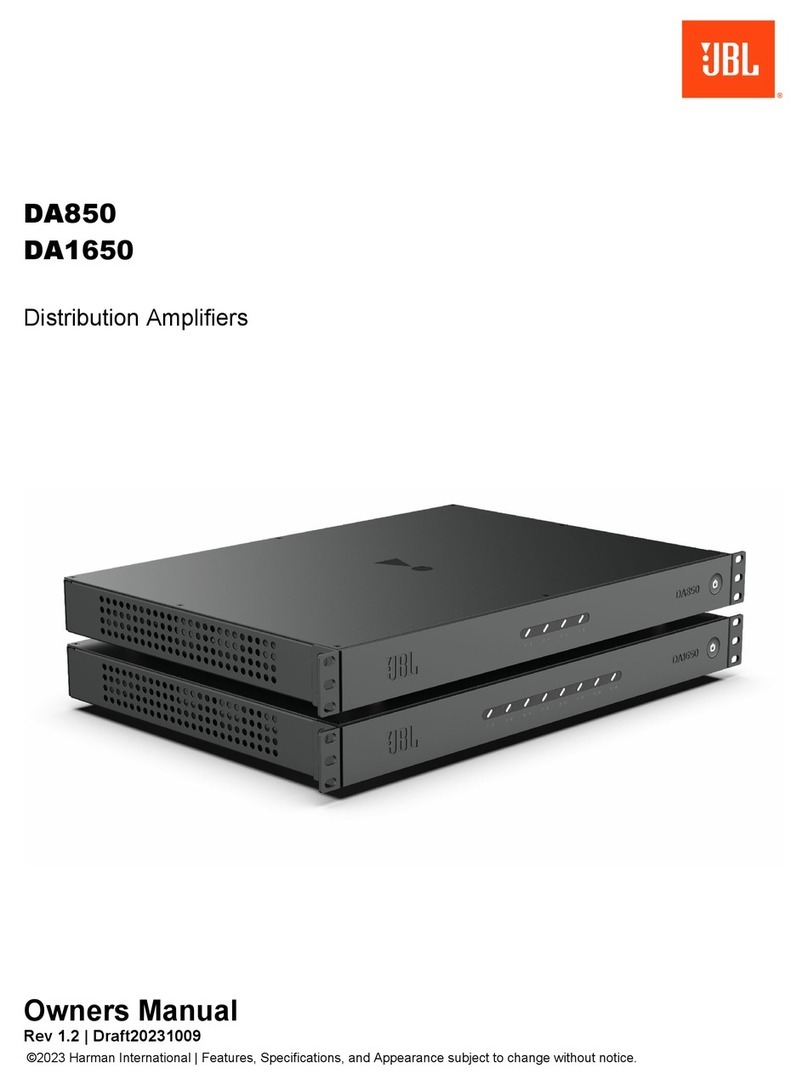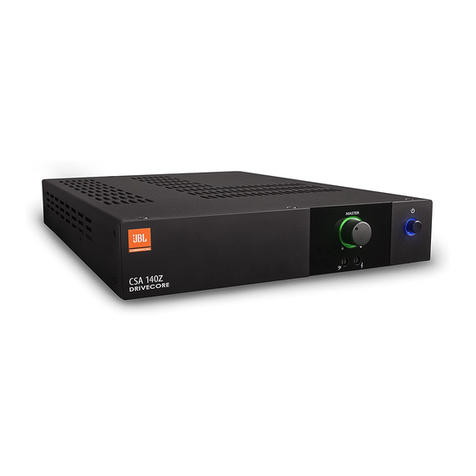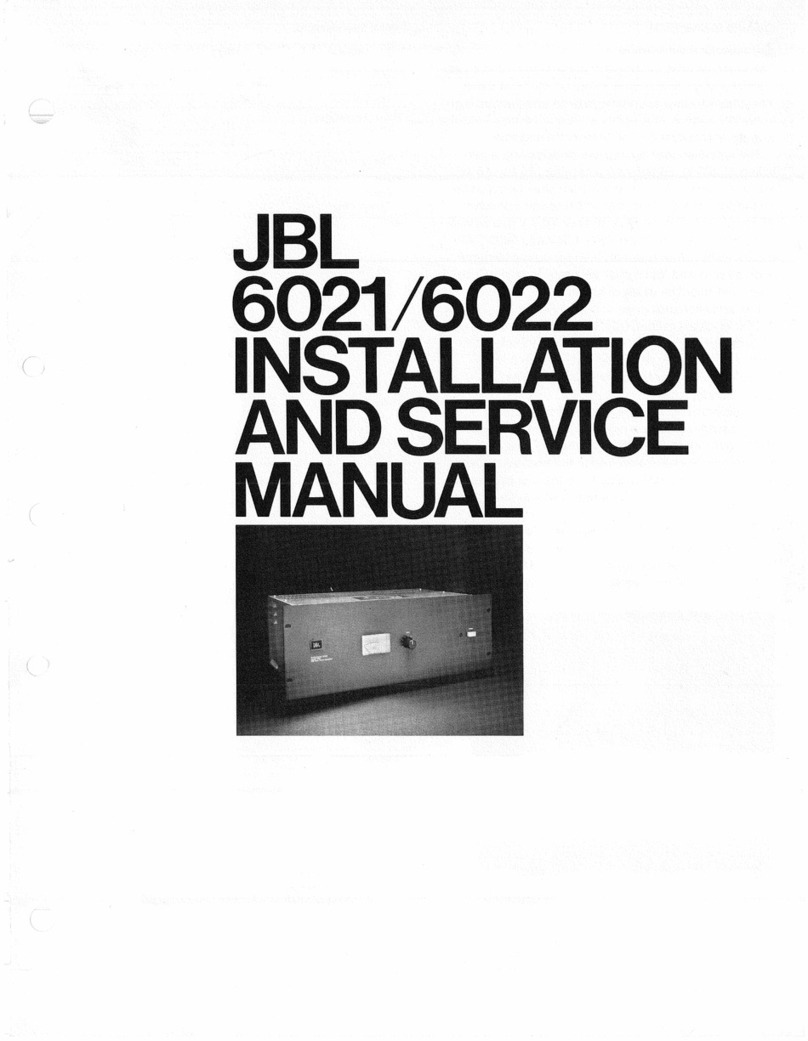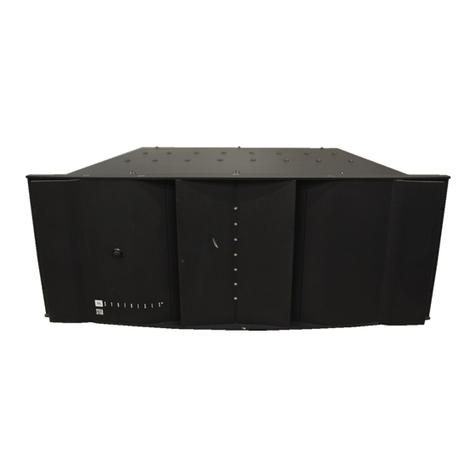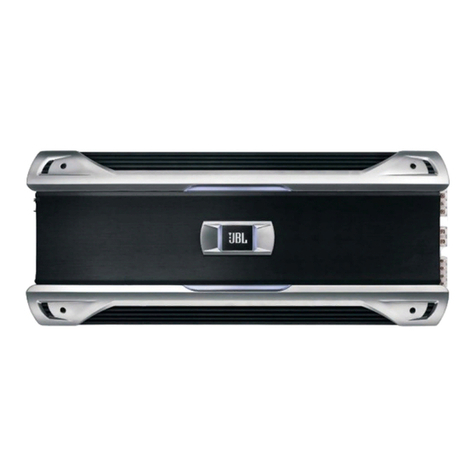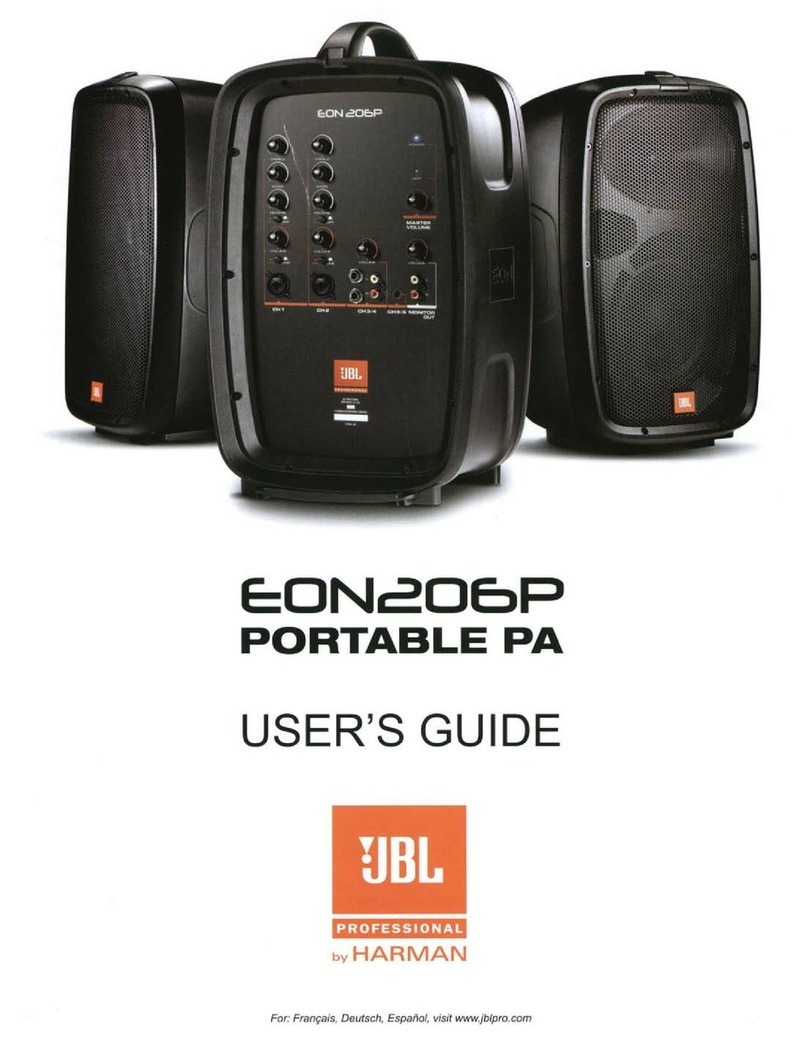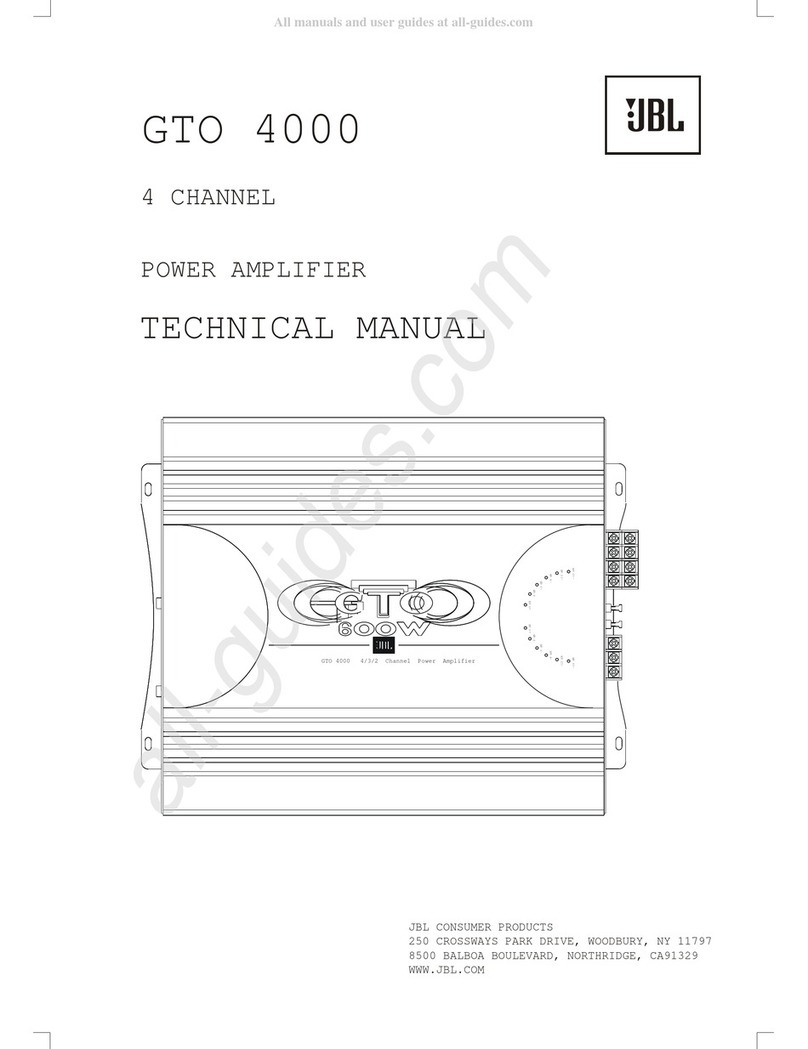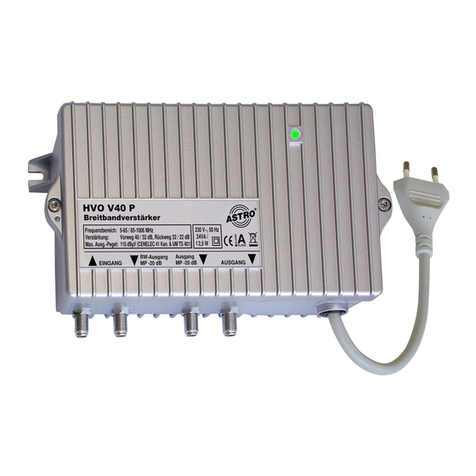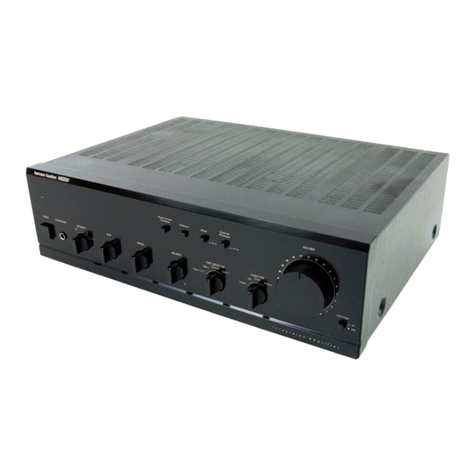
• Ground:
Run
a wire (the same gauge as the power
wire) from the GND input to a factory bolt
in
the vehi-
cle's chassis
(see
illustration below). NOTE: Remove
any paint from the
chaS$iS
for best contact.
If
using
a ring connector, place a star washer below the ring
connector for a secure connection.
• For a more secure ground connection, use the includ-
ed E.A.R.L. ground terminal. Crimp the open end of
the terminal to the end of your ground wire, then place
the terminal against bare chassis metal, and secure
with the included self-tapping screws. NOTE: Be sure
to check below your desired ground location to ensure
that the screws will not puncture brake lines, fuel lines,
or wiring harnesses.
Fa
c
to
ry
Bolt
Ri
ng
Connector
Note
:
Remove
an
y
paint
below
ring
c
onnector
0 Preamp outputs
Star
Washer
The Stadium 4 amplifier allows you
to
send a second
amplifier line-level signal. Connect a set of RCA patch
cables to the line-level inputs on the Stadium amplifier at
one end, and to the second amplifier's line-level inputs at
the other.
eLine-level inputs (RCA)
If
your source unit offers preamp outputs, connect to the
front and rear L and
R,
and subwoofer inputs using RCA
patch cables.
If your
car
audio system's head unit does not have
line-level outputs, use the supplied bare wire-to-RCA
adapters to connect the Stadium amplifier's inputs to
either the front
or
the rear speaker outputs
of
your car
audio system's head unit (splice crimps not included).
Use a small Phillips screwdriver to loosen the adapter's
set screws and insert the speaker wires into the holes on
the back of the adapter. Tighten the set screws to secure
the wires.
Always connect the(+) speaker wire to the adapter's
(+)terminal and
the(-)
speaker wire
to
the adapter's (-)
terminal. When
all
wires are connected, plug the adapters
into the Stadium amplifier's preamp inputs.
Loosen
Screws
Insert
Wires
Tighten
Screws
Important: Some factory audio system amplifiers
include electronic filters that limit the amount of bass
sent to the system's smaller speakers. This filtering will
adversely affect the Stadium amplifier's performance.
To
get the most bass possible, splice the high-level wires
into the factory speaker outputs that are connected to
the system's largest speakers (the ones designed to
reproduce the most bass).
C) Input level
Select LO if providing signal to the
amplifier with line-level connections.
Select
Hl1
or Hl2
if
using speaker-level
connections.
INPUT LEVEL
liD
II
__J
I
'-
LO
Hl1
Hl2
Note: If you have connected your amplifier
to
factory
speaker outputs and the audio fails to
play,
change the
switch to "HI2".The "HI2" position includes a circuit
designed to fool a factory audio system into "seeing" a
speaker connected to its input. Important: "HI2" should
never be used when the amplifier
is
connected to a head
unit's line-level
(RCA)
outputs.
0 Auto turn-on selector
If
your stereo has no "Remote Out" lead,
slide the "AUTO TURN ON" switch to
"ON". This will allow the amp to turn
on
when
it
detects speaker-level audio signal.
AUTO
TURN ON
0::0
_j
L
AUTO OFF
E)Crossover filter selectors (X-OVER)
You
can choose the type of crossover
filters for your system.
• LPF: Low pass. Choose this setting
if
you're connecting a subwoofer(s),
or want to provide a low-pass filter
for separate mid-bass speakers.
X-OVER
D:JJ
_JIL
LPF
FULL
HPF
• FULL: Full range. Choose this setting if you're
connecting full-range speakers, and not using a
subwoofer
in
your system.
• HPF: High pass. Choose this setting
to
prevent low
bass from reaching midrange or full-range speakers
when you're using a subwoofer
in
your system.
E)GAIN: Setting the input sensitivity
To
match your amplifier's input sensitivity
(gain)
to your
source unit's output
level
, we recommend the following
procedure:
• Turn both input
level
controls counterclockwise to MIN
(minimum).
• Play a dynamic music track through your source
unit.
Turn
the source unit's volume control to the 3/4
position.
